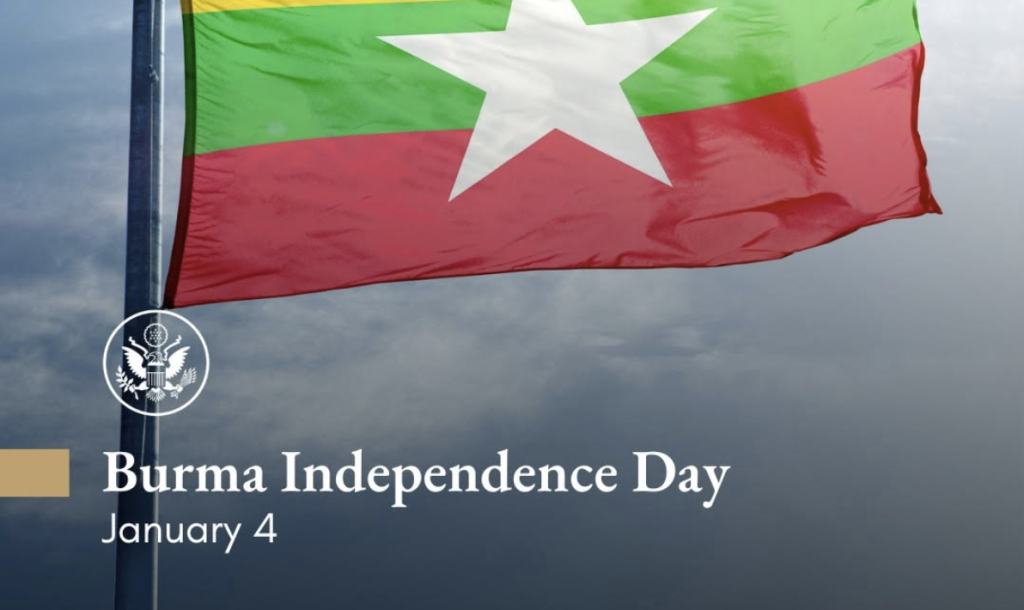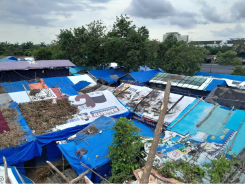The Chinese philosopher Kong Fuzi (“Master Kong”, or “Confucius” to Western audiences) is reported to have said about 2,500 years ago that:
If names be not correct, language is not in accordance with the truth of things. If language be not in accordance with the truth of things, affairs cannot be carried on to success.
This analect, or saying, highlights a problem well known to Myanmar-watchers: those looking at, or writing about, the country very quickly run up against the question of what to call it, and what to call the various actors and institutions who play a part in its politics, security and civil society. Not only are there the formal names, which seem constantly to be changing, but there are also the literary names, the politically correct names, the more commonly used names and other names used in the vernacular sense.
Nick Cheesman’s recently published book, Myanmar: A Political Lexicon, which critically examines the use of particular Burmese words and phrases in the current context, brings home the complexity of this issue. Inspired by his fine work, the following jottings (and those in a second part to this article) might be of interest to New Mandala’s readers, and give prospective students of Myanmar an idea of what to expect. I have focussed on political and security issues, as they are the fields best known to me, but I dare say others with interests in other subject areas could compile similar lists.
After Myanmar’s armed forces crushed a nation-wide pro-democracy uprising in 1988, the country’s official name (in English) was changed from its post-1974 form, the “Socialist Republic of the Union of Burma”, back to the “Union of Burma”, which had been adopted when Myanmar regained its independence from the United Kingdom (UK) in 1948. In 1989, the ruling State Law and Order Restoration Council (SLORC) changed the country’s name once again, this time to the “Union of Myanmar”, which had long been the vernacular version, in the literary register at least. In the official declaration of the country’s independence, for example, it was called the Union of Burma in the English language version and the Union of Myanmar in the Burmese version.
In 2011, after formal promulgation of the 2008 national constitution, the country’s official name was changed yet again, this time to the “Republic of the Union of Myanmar”. This name is currently recognised by the opposition National Unity Government (NUG), although on its website the NUG also refers to the “Federal Union of Myanmar”, the ultimate goal of the shadow government’s publicly declared 12-point roadmap to national renewal.
Also, in 1989 a number of other place names were changed by the SLORC to reflect their indigenous roots and to conform more closely to their original pronunciation in the Burmese language. For example, Arakan State became Rakhine State and Tenasserim Division became Tanintharyi Division. The Mergui Archipelago became the Myeik Archipelago, the Irrawaddy River became the Ayeyarwady River and the Salween River became the Thanlwin River. The city of Rangoon became Yangon, Moulmein became Mawlamyine, Akyab reverted to Sittwe and Maymyo became Pyin Oo Lwin. The ethno-linguistic groups formerly known as the Burmans and the Karen are now called the Bamar and the Kayin. The people of Kayah State are widely known as Karenni (Red Karen), the state’s name until it was changed by the Burmese government in 1952.
Just to complicate things, in the 2008 constitution, written before the armed forces stepped back from direct rule in 2011, the names of Myanmar’s seven administrative “Divisions”, which are dominated by ethnic Bamar, were changed to “Regions”. There are also seven States, one Union Territory, one Self-Administered Division and five Self-Administered Zones.
The new names have been accepted by most countries, the United Nations and other major international organisations. A few governments, activist groups and news media outlets, however, still cling to “Burma” as the name of the country, apparently as a protest against the SLORC’s refusal to put the question of a name change to the people of Myanmar. The old name was also believed to be the preference of then opposition leader Aung San Suu Kyi, who was held under house arrest by the military regime for periods totalling almost 15 years, and is now back in prison. Of necessity, the new name is cited in all formal diplomatic exchanges, but failure consistently to acknowledge and use it in public has prompted complaints by successive Myanmar administrations.
These complaints have been directed mainly at the United States’ government which, even now, 35 years later, insists on using “Burma” in official correspondence and Congressional documents. For example, all US laws and regulations levelling sanctions against Myanmar since 1988 refer specifically to “Burma”, as demonstrated by the “Burma Unified through Rigorous Military Accountability (BURMA) Act” of 2022. It has been suggested that one reason for Washington’s obduracy is that official recognition of the country’s new name would require a revision of all these laws and regulations, something that successive US governments have been unwilling to pursue.
Questioned about the official name of the country soon after her party took office in 2016, Aung San Suu Kyi stated her continuing preference for the colonial-era term “Burma”, but said that both names were now acceptable.
From January 1862, when British Burma was declared a separate province of (British) India, Yangon (then known as Rangoon) had been the capital. After the UK dispatched troops to the royal capital of Mandalay and completed its three-stage conquest of Burma in January 1886, Rangoon was confirmed as the administrative capital of the entire country. It remains the commercial capital, but in November 2005 the ruling State Peace and Development Council (SPDC), which replaced the SLORC in 1997, formally designated the newly-built city of Naypyidaw (or Nay Pyi Taw), 327 kilometres north of Yangon, as the seat of Myanmar’s government.
The terms “Rangoon regime”, “Yangon regime”, or in some cases simply “Rangoon” or “Yangon”, have been used by some authors and commentators as shorthand terms for the central government, including the military government that was created in 1962 and re-invented in 1974, 1988 and 1997. The government after 2005 was sometimes referred to as the “Naypyidaw regime”, or “Naypyidaw”, to reflect the administrative change that took place that year. Since the 2021 coup, however, that has become less common, although formally Naypyidaw remains the capital of the country.
Another well-known Burmese name is Tatmadaw. Since 1948, the name has been the vernacular term for Myanmar’s tri-service (army, navy and air force) armed forces. It is usually translated as “royal force”, but the honorific daw no longer refers to the Burmese monarchy. Rarely used in foreign publications before the 1988 uprising, it has since gained wide currency in English language and other works on Myanmar. Sometimes, the Tatmadaw is referred to simply as “the army”, reflecting that service’s overwhelming size and influence, compared with the other two.
The English term “Defence Services”, which first appeared in 1952, usually refers only to the armed forces, but is sometimes used in a wider context to refer collectively to the armed forces, the Myanmar Police Force (MPF), the “People’s Militias”, border guard forces and sundry other state-endorsed paramilitary units. The Myanmar Fire Services Department and Myanmar Red Cross Society are considered “reserve forces for national defence” by the military regime and as such have also been included in this broad category. As the 2008 constitution decrees that “all the armed forces in the Union shall be under the command of the Defence Services”, the formal title (in English) of the Tatmadaw’s most senior officer is Commander-in-Chief of Defence Services.
Thanks to numerous references made by journalists and on-line commentators, another Burmese term that has become familiar since the 1988 uprising is Lon Htein, used to describe the paramilitary units of the police force that have been called out to quell civil unrest. Lon Htein is short for Lon-chon-hmu Htein-thein Tat-yin, literally translated as “security preservation battalion”. Usually translated into English as “riot police”, the Lon Htein has suffered several variations of name over the years, from “riot security forces” to “police regiments” and “police security battalions”, even “police combat battalions”. While the term Lon Htein still crops up in articles and blogs, these forces are now collectively referred to as the Police Security Unit.
Taken together, the armed forces, the national police force and Myanmar’s three main intelligence agencies (the Office of the Chief of Military Security Affairs, the MPF Special Branch and the Bureau of Special Investigations) are often referred to as the country’s “security forces”, and are widely acknowledged to constitute the core of the state’s coercive apparatus.
At times, however, other government agencies, such as the Ministry of Border Affairs, the General Administration Department and the Prisons Department have been included in this term. Myanmar Posts and Telecommunications, the Ministry of Immigration and Population, and the bureaucratic organs responsible for conducting census surveys, have also contributed to the state’s surveillance capabilities. Ad hoc militias and informal gangs of thugs overtly or covertly employed by the government as coercive muscle and “enforcers” in local neighbourhoods are not seen as legitimate members of the so-called “uniformed” or “disciplined” services. Accordingly, they are not accepted (by anyone) as members of Myanmar’s security forces.
Over the years, some components of Myanmar’s intelligence apparatus have changed their names. The military intelligence organisation, for example, has periodically been renamed, usually to coincide with structural and personnel changes in the armed forces. These adjustments have not always been known to, or recognised by, foreign observers. Also, Burmese language titles have been translated into English in different ways. For example, the title “Office of the Chief of Military Security Affairs” (OCMSA) has sometimes been written as the “Office of the Chief of Military Affairs Security”, or simply “Military Affairs Security”. It has also been called the “Department of Security on Military Affairs” and the “Directorate of Defence Services Security”.
The use of popular names for such institutions has added another complication. For example, ever since 1948, and regardless of its formal title, the Tatmadaw’s intelligence arm has been widely known as the Military Intelligence Service (MIS), or simply the “MI” (“em-eye”). Similarly, the national police force’s Intelligence Bureau, and later its Special Investigations Department (or, strictly translated, “Information Police”), has long been known in both English and Burmese as Special Branch, or “SB”. It even appears as “Special Branch” in internal police documents and reports prepared for the MPF by outside agencies.
All this has meant that in the international news media, online commentaries and other literature some of Myanmar’s security forces have been called by several different names, and not always accurately.
Since the coup d’etat on 1 February 2021, many activist groups and commentators have refused to call the new military regime by its self-granted title, the State Administration Council (SAC), which on 1 August that year branded itself a “provisional” or “caretaker” government. They refer simply to “the junta” or “the military regime”, names rejected by the military leadership. Junta leader Senior General Min Aung Hlaing has been denied any official status or recognition, being widely known as “the junta chief” or Ma Ah La, the Burmese acronym for his personal name.
Will Pekanbaru become Indonesia’s Cox’s Bazar?
The treatment of refugees in Indonesia sees a serious setback
Controversy also surrounds the term used to describe those ethnically-based armed groups fighting Myanmar’s central government, some of them for decades. The Kayin struggle, for example, has been described as the longest-running insurgency in the world, dating from 1949. For many years, these groups have been known as “ethnic armed organisations” (EAO), or variations thereof, such as “armed ethnic groups”. Although it is widely used in the international news media, these insurgents dislike the term “rebels”, as it suggests a lack of legitimacy, both for the groups themselves and their struggles for independence, autonomy or other goals.
Since the 2021 coup, not all EAOs have openly declared their support for the opposition movement but those that have, and are loosely allied with the NUG and PDF, are increasingly being referred to as “ethnic resistance organisations” (ERO). An alternative meaning of ERO found in some sources is “ethnic revolutionary organisations”. This follows moves by some activists and sympathetic observers to describe the current conflict as a “revolution” and not a “civil war” (the more common term). This view seems to be based on the nature of the armed struggle, the scope of the opposition’s aims and the number of people in Myanmar who appear to support them. A more neutral term also used from time to time is “non-state armed groups”.
Added to the complexity and confusion arising from the shifting use of official and politically sensitive titles is Myanmar’s even more complicated landscape of personal names. This is examined in part two of this article.
 Facebook
Facebook  Twitter
Twitter  Soundcloud
Soundcloud  Youtube
Youtube  Rss
Rss 
